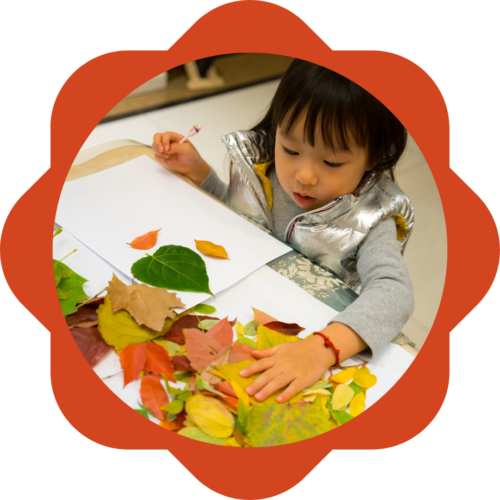Nature is a fascinating environment to create fun, authentic learning experiences, especially when it comes to math concepts!
Math has always had a place in the natural world and can be dated back to over a thousand years when ancient humans first developed a system for counting.
Math helps us understand the natural world around us, and nature has always been the inspiration for new ideas.
“Mathematics is the language with which the universe was written.”
– Galileo
Let’s explore seven benefits of using nature and the outdoors to teach math:
 1. Provides motivation. Using nature as the context for math activities often increases learners’ enthusiasm, engagement, and participation. Using math in real-life environments can help learners experience how and why it is important in their everyday lives, inspiring them to learn, succeed, and supporting learning retention.
1. Provides motivation. Using nature as the context for math activities often increases learners’ enthusiasm, engagement, and participation. Using math in real-life environments can help learners experience how and why it is important in their everyday lives, inspiring them to learn, succeed, and supporting learning retention.
- 2. Increases mathematical thinking. The outdoors provides a relaxed and enjoyable environment for exploring math and helps learners develop an authentic and intuitive understanding of concepts and processes. The outdoors also helps to move math from a theoretical idea to real, hands-on learning.
- 3. Invites problem-solving. When learners are involved in activities that they find engaging, they are more motivated to think critically and solve problems. Outdoor math activities offer opportunities for learners to develop their own goals and questions, leading them to solve increasingly complex challenges.
- 4. Supports diversity. The outdoors offers infinite pathways and materials for learning math skills and concepts. This diverse context benefits many learners with a wide range of social, emotional, physical, cognitive, and cultural needs.

- 5. Strengthens STEM skills. Exploring math outdoors supports many STEM skills, including applying logic, learning from mistakes, thinking creatively, working collaboratively, and communicating ideas. Learning math outside can also help learners develop real-world skills such as gardening or using a compass.
- 6. Enhances cross-curricular learning and improves overall school success. By doing math activities outside, learners not only improve their math skills but also their understanding of science and social studies concepts and language proficiency. Learners can also improve test scores, attendance, and overall attitudes toward school when they spend time learning outdoors!
- 7. Supports child development. Children’s health and well-being benefit from exposure to fresh air and sunlight. Outdoor learning can help learners enhance their attention skills, boost their mood, and provide opportunities for physical development.
Looking for a few ideas to get started?
- Practice math this fall! Incorporate PLT’s Signs of Fall Family Activity into your lesson to help kids learn about math and sorting while enjoying the outdoors
- Browse PLT’s free STEM Strategies article series exploring interesting ways to apply science, technology, engineering, and math to PLT activities and resources
- PLT’s Shop offers a variety of digital and print activities for educators of all ages, with special adaptations and ideas for STEM and math-focused environmental education
- Find an in-person or blended professional development workshop offered in your state!
Want to learn more?
This virtual workshop, presented by Project Learning Tree and Cyberchase, and hosted by Green Teacher, explores fun ways to help kids ages 5-8 strengthen their math and STEM skills while using engaging hands-on activities to learn about nature.


